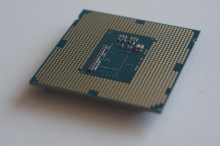Alleged ISIS leak compromises hundreds of U.S. military & intelligence emails — Dept of Defense is ‘looking into it’
A Twitter account claiming to be the “IS Hacking Division” has published what appears to be an extensive directory of government emails, passwords, credit cards, phone numbers, and addresses spanning U.S. military departments and divisions, the FBI, U.S. embassies, the Library of Congress, U.S. city officials, the British Embassy, the FTC, and NASA, as well as possible personnel at Wells Fargo.












































































